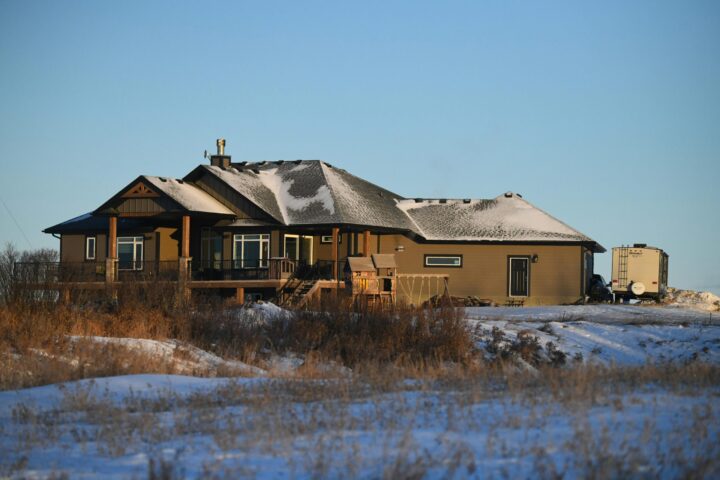The following contribution is from another author.
Cold weather can be harsh, especially if your home isn’t ready. A well-prepared house keeps you comfortable and helps avoid costly repairs. So, winter preparation is not just about warmth—it also prevents unexpected breakdowns and high energy costs.
Neglecting necessary maintenance can lead to issues like frozen pipes, inefficient heating, and air leaks. These problems increase utility bills and create safety hazards. A home that’s not winter-ready may also struggle with inconsistent heating, making some rooms colder than others.
This article will help you learn how taking a few essential steps can ensure a trouble-free season.
Let’s dive in.
Heating System Check
A reliable heating system is crucial for winter comfort. For example, careful inspection of your furnace before the cold hits to ensure efficiency. A poorly maintained system uses more fuel, increasing heating costs.
Routine servicing keeps heating units in top shape. Clean or replace filters regularly to prevent airflow blockages. If you have a heat pump, check for obstructions around the outdoor unit. Radiators should be bled to remove trapped air, which reduces efficiency.
Regular maintenance prevents breakdowns in freezing temperatures. If your heating system is old or unreliable, upgrading to a more efficient model can lower energy use and keep your home warm. Proper upkeep also reduces safety risks, such as gas leaks or carbon monoxide buildup.
Reliable Fuel Supply
Many homeowners prefer a furnace because it provides steady, reliable heat, even in extreme cold. Unlike electric heating, which can struggle during power outages, a furnace fueled by heating oil ensures continuous warmth.
Your heating system works best with a steady fuel supply. Running out of heating oil in peak winter can leave your home cold and uncomfortable. A reliable supplier ensures you never face unexpected shortages.
For example, people using Romeo’s Fuel supply highlight that timely deliveries and competitive pricing help homeowners manage heating costs. Their service keeps homes warm all winter without unnecessary stress. Customers can schedule deliveries online, making fuel management easy and hassle-free.
Seal Drafts and Insulate
Gaps and leaks let cold air inside, making heating less effective. Checking windows and doors for drafts is an easy way to prevent heat loss. Weather stripping or caulking around openings improves insulation.
Attic and wall insulation helps keep warm air inside. Poor insulation forces your heating system to work harder, raising energy costs. Adding insulation where needed makes a noticeable difference.
Heavy curtains help retain heat in rooms, and door draft stoppers prevent cold air from entering. These simple adjustments enhance comfort and reduce unnecessary energy waste. Insulating basements and crawl spaces also improve indoor temperatures, preventing cold spots in different areas of your home.
Protect Pipes from Freezing
Pipes can freeze and burst, leading to costly water damage. To prevent this, insulate exposed pipes, especially in unheated spaces like basements and attics. Pipes in garages and crawl spaces are also at risk and should be checked for proper insulation.
Leaving faucets slightly open during extreme cold helps prevent freezing. If temperatures drop too low, a slow drip keeps water flowing, reducing the risk of blockages. Consider opening cabinet doors under sinks to allow warm air to circulate around the plumbing.
Outdoor plumbing also needs attention. Drain garden hoses and shut off exterior water lines before winter starts. These steps protect your home’s water system from cold-related damage. Additionally, knowing where your main water shutoff valve is located can help you act quickly in case of an emergency.
Fireplace and Safety Checks
Winter means more indoor heating, increasing fire and air quality risks. Clean chimneys and fireplaces to remove soot buildup that can cause fires. A professional inspection can help identify cracks or blockages that may lead to dangerous situations.
Carbon monoxide detectors are essential for safety. Heating systems and fireplaces can release this dangerous gas if not properly maintained. Test detectors to ensure they work correctly. Replace batteries regularly and install additional detectors if needed.
Use space heaters with caution. Keep them away from flammable materials, and never leave them unattended. Taking these precautions keeps your home warm and safe. Also, check fire extinguishers and smoke detectors to ensure they are working in case of an emergency. Keeping an emergency escape plan in place can also improve overall home safety.
Conclusion
Preparing your home for winter prevents problems and keeps you comfortable. Check your heating system, ensure a steady fuel supply, and seal drafts to maintain warmth. Protect plumbing from freezing and perform essential safety checks. A little preparation saves money, avoids stress, and reduces energy waste. Stocking up on essentials like extra blankets and emergency heating solutions can also be helpful. Stay ahead of the cold with these steps to enjoy a trouble-free winter at home.

















Go to the official WhatsApp website, choose the appropriate operating system (such as Windows, macOS, Android, iOS, etc.), and download the application:WhatsApp web https://www.webi-whatsapp.com
For more information on how to download and use the Chinese version of Telegram, please visit our external blog link:Telegram download https://www.telegram-ios.com